|
|
Family SYNLESTIDAE - Needles and Whitetips
The damselflies in this family are large in size. They have narrow wings and slender body, usually rest with wings spread opened. We found one species of this family in Brisbane.
Southern Whitetip - Episynlestes albicauda
- This page contains information and pictures about Southern Whitetip Damselflies that we found in the Brisbane area, Queensland, Australia.
-

- Body length 50mm, male
- Southern Whitetip Damselfly is a very large and slender damselfly. It is the largest damselfly we found in Brisbane. The male is up to 60mm in body length and female is 50mm.
Female
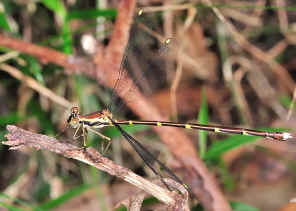
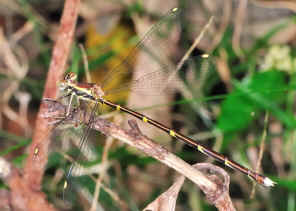
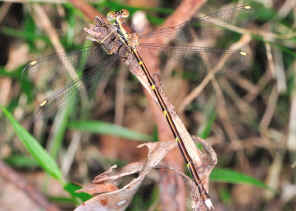
- The damselfly is brown metallic in colours with pale marking on front bottom side of each abdomen segment. There is the distinctive white end tip for both male and female. Female's white tip is boarder.
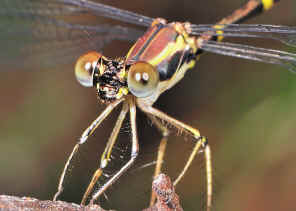
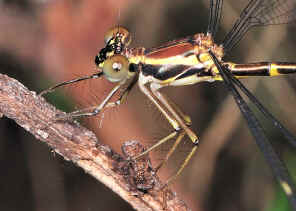
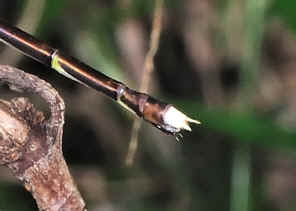
- According to Ric Nattrass's book the damselflies are localized and rare, and their number appears to be declining.
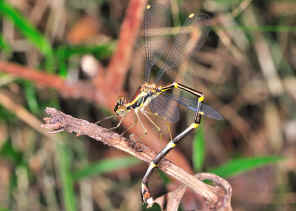
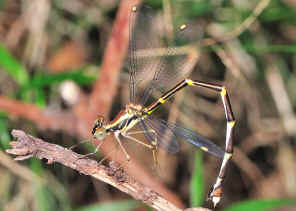
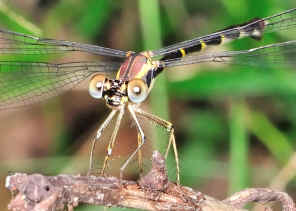
- We found the damselfly once on Oct 2011. It was in the Buhot Creek Reserve near the junction of Buhot Creek and Tingalpa Creek. The water was muddy and running slowly. There were a few small ponds there. The habitat is wet Eucalypt forest.

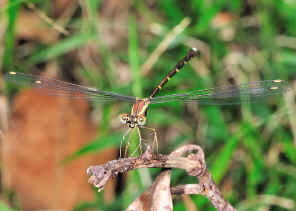
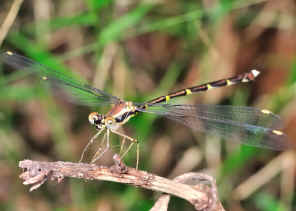
- When we saw the damselfly, it was resting on a stick near the forest floor shady area. It was a few meters from the creek. The damselfly was very cooperated so we took a lot of photos in different angles. Even if we came too closely, it just flied up a bit and returned to the same spot. In the area we did not see any other Southern Whitetip Damselflies. We did see many Common Flatwing Damselflies around.
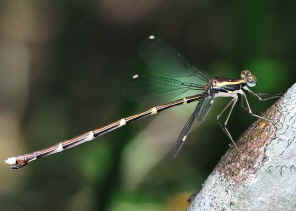
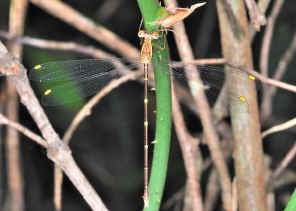
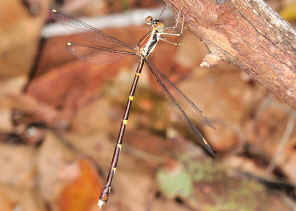
- For the next two weeks after we first found the Southern Whitetip Damselfly female above, we when the area again to check if we can find some more, especially find a male.
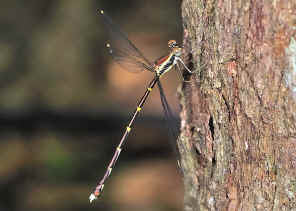
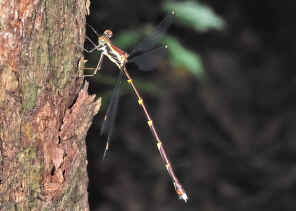
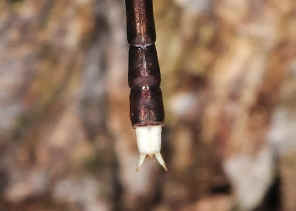
- We found that the Southern Whitetip Damselflies are locally quite common. In a sunny morning we found four females along the Tingalpa Creek. All of them were resting in shade area. They are well camouflaged and quit hard to spot.
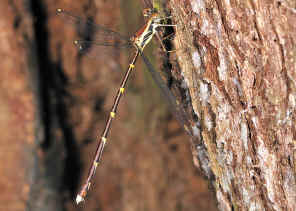
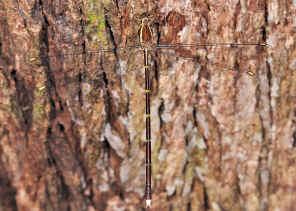
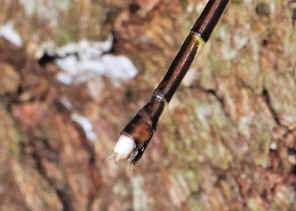
- All of them are not camera shine. Once found, we took photos easily at different angle very closely.
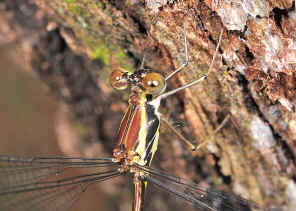
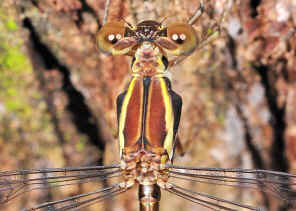
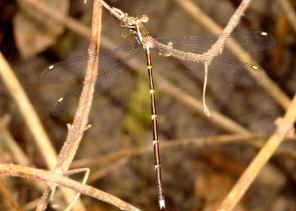
-
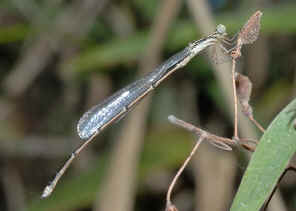
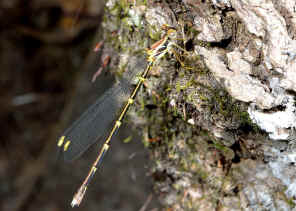
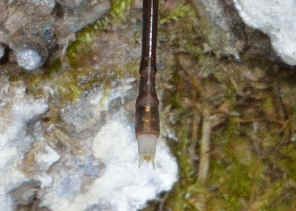
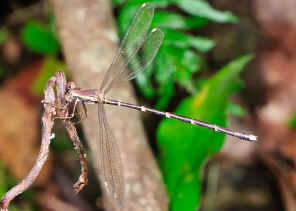
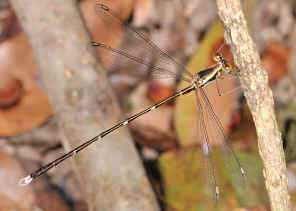
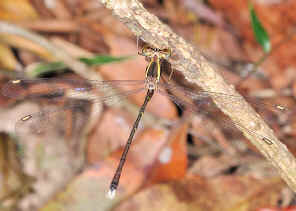
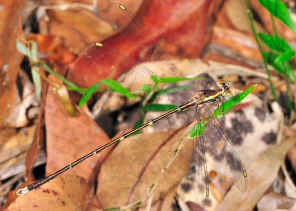
- We kept going back this the junction of Buhot Creek and Tingalpa Creek every weekend. We hoped to find a male. Finally on mid Nov 2011, we found this male. It looked very similar to the female and the size is about the same. It seems that male is more alert than female. We approached it very carefully and only took a few pictures.
-
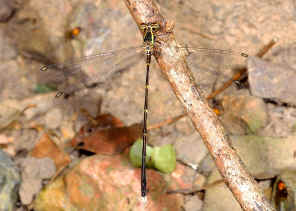
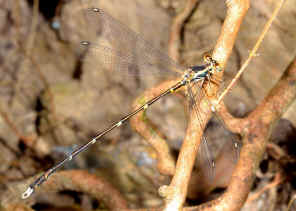
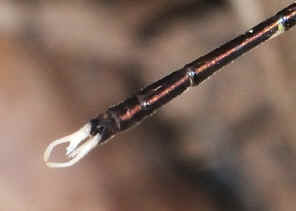
- We did not find any other male or female in the trip of that day.
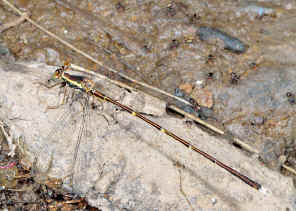
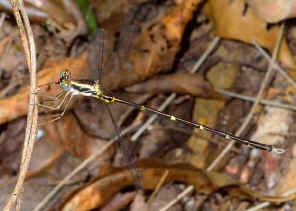
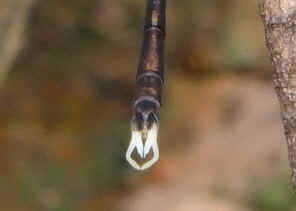
- Reference:
- 1. The Australian Dragonflies - CSIRO, Watson, Theisinger & Abbey,1991, p166.
- 2. A Field Guide to Dragonflies of South East Queensland - Ric Nattrass, 2006, p17.
- 3. The Complete Field Guide to Dragonflies of Australia - CSIRO, GŁnther Theischinger and John Hawking, 2006, p28.
- Back to Top
